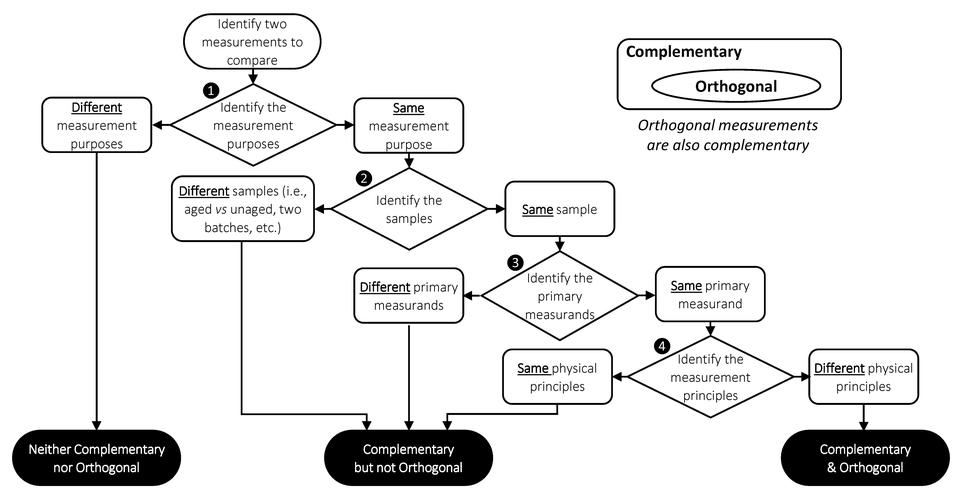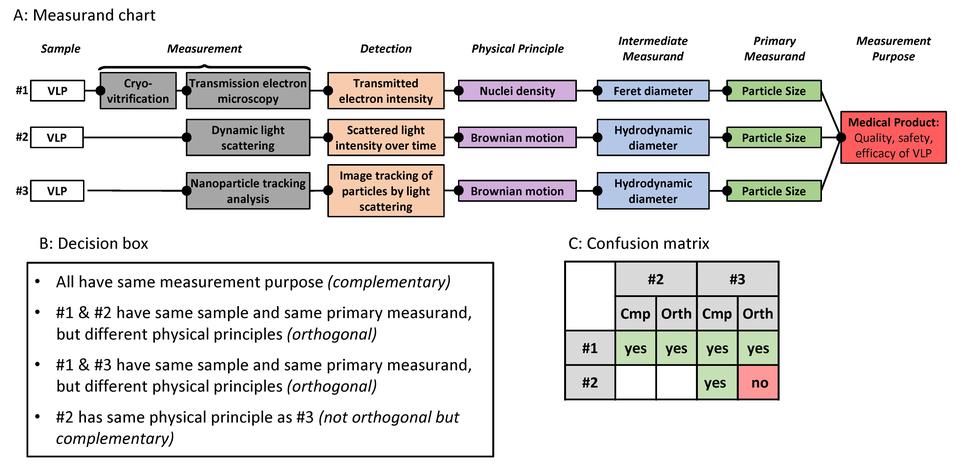Summary
Reliable measurements of quality attributes of medical products are required for quality control and verification of safety and efficacy. To reduce (i) the risk of measurement bias and (ii) the uncertainty in decision-making during product development, a combination of orthogonal and complementary analytical techniques are generally recommended. However, despite frequent reference to “orthogonal” and “complementary” measurements in guidance and the literature, neither term is clearly defined. How does one determine if two analytical methods are orthogonal or complementary to one another? Definitions are needed to design a robust characterization strategy for a medical product. Definitions for "orthogonal" and "complementary" are proposed that are compatible with existing metrological terminology and are applicable to complex measurement problems. Orthogonal methods target the quantitative evaluation of the true value of a product attribute to address unknown bias or interference. Complementary measurements include a broader scope of methods that reinforce each other to support a common decision.
Description
Definitions:
- Orthogonal measurements: Measurements that use different physical principles to measure the same property of the same sample with the goal of minimizing method-specific biases and interferences.
- Complementary measurements: Measurements that corroborate each other to support the same decision.


ReferenceS
Simon CG, Borgos SE, Calzolai L, Nelson BC, Parot J, Petersen EJ, Roesslein M, Xu X, Caputo F (2023) Orthogonal and complementary measurements of properties of drug products containing nanomaterials. Journal of Controlled Release 354, 120-127. https://doi.org/10.1016/j.jconrel.2022.12.049
Simon Jr CG, Bozenhardt EH, Celluzzi CM, Dobnik D, Grant ML, Lakshmipathy U, Nebel T, Peltier L, Ratcliffe A, Sherley JL, Stacey GN, Taghizadeh RR, Tan EHP, Vessillier S (2024) Mechanism of Action, Potency and Efficacy: Considerations for Cell Therapies. Journal of Translational Medicine 22:416. https://doi.org/10.1186/s12967-024-05179-7
Future Work
- Apply these concepts to biological measurements, such as cell viability
- Apply these concepts to quality assessment of complex drugs, such as mRNA therapeutics or lipid-based therapeutics
- Develop a terminology standard at ISO or ASTM

